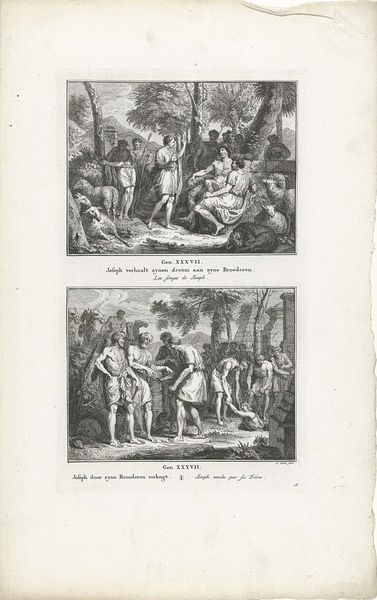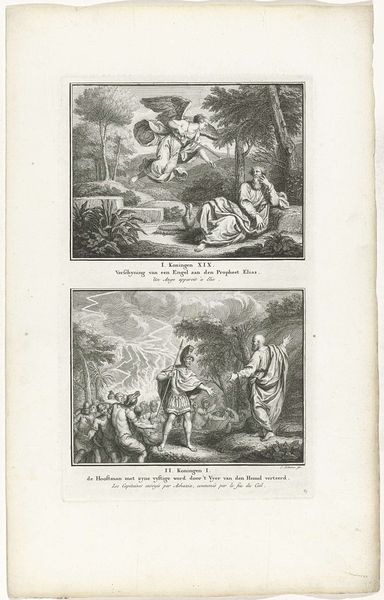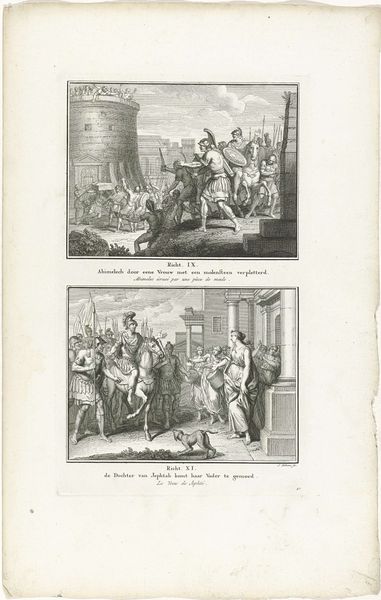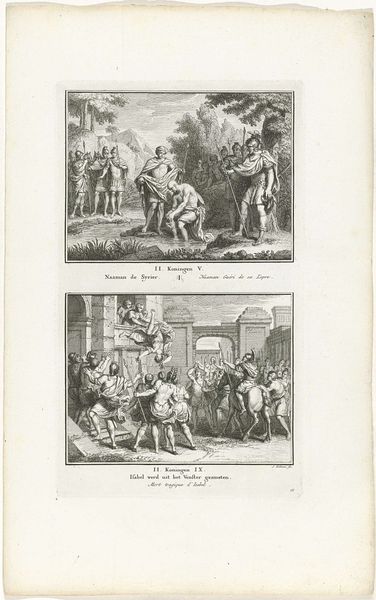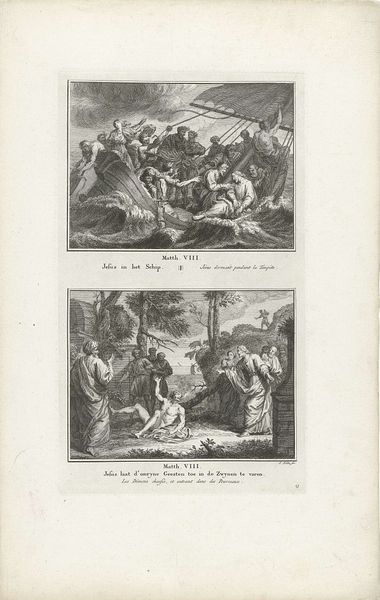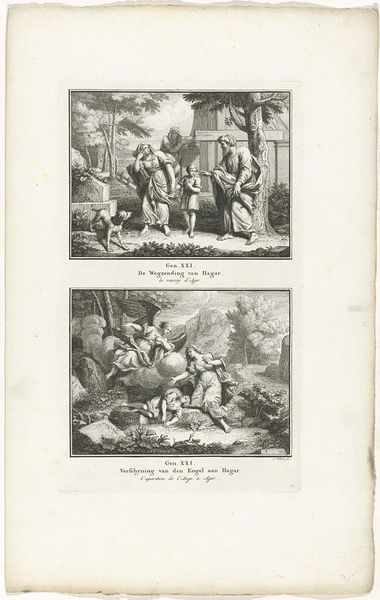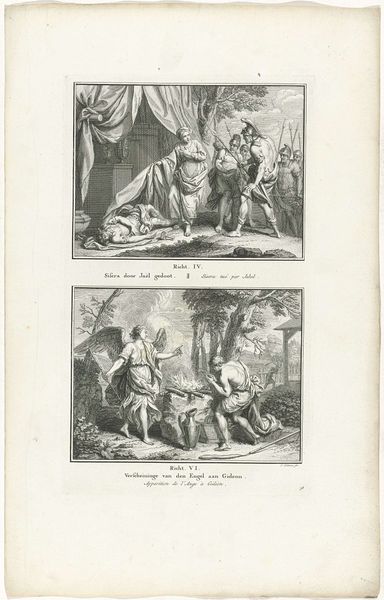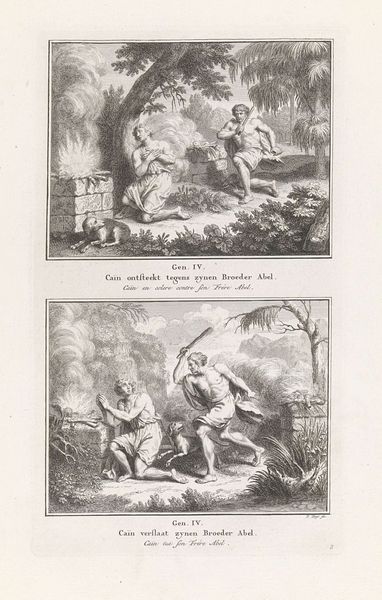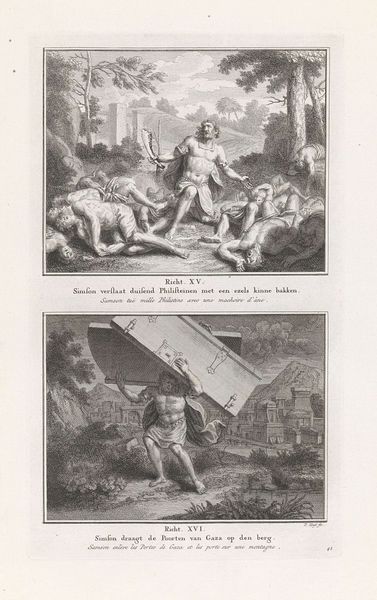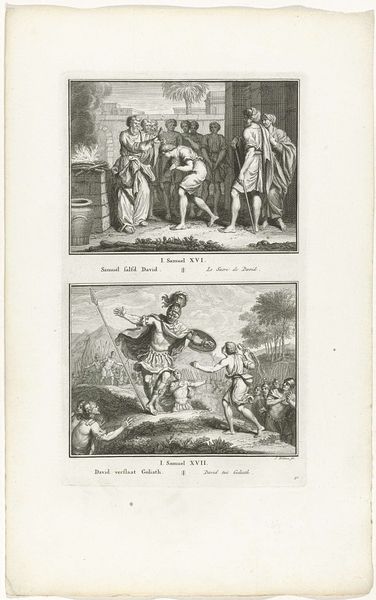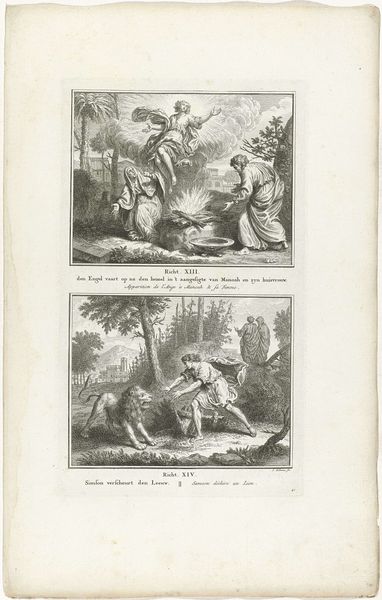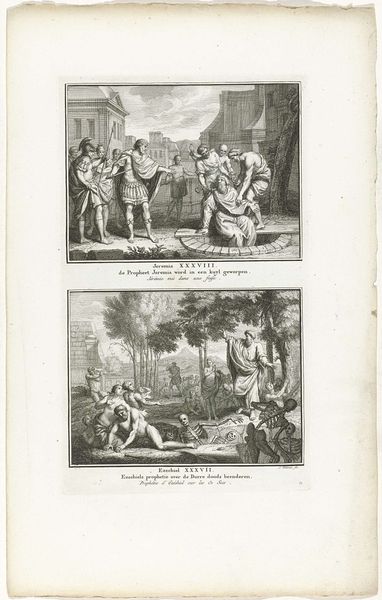
Jonathan beklimt de door de Filistijnen bezette berg en Jonathan proeft honing op vastendag 1791
0:00
0:00
jacobfolkema
Rijksmuseum
Dimensions: height 326 mm, width 193 mm
Copyright: Rijks Museum: Open Domain
Editor: This is "Jonathan beklimt de door de Filistijnen bezette berg en Jonathan proeft honing op vastendag" made in 1791 by Jacob Folkema. It's an engraving, and what strikes me first is the clear division of labor in each scene—soldiers in combat versus gathering food. What can you tell me about this piece? Curator: What I see is the story, taken from Samuel, articulated through the precise labor of the engraver's hand. The division into two registers invites us to consider how resources, like food represented by the honey, are acquired and consumed during wartime. Notice the stark contrast: violent conflict in the upper panel, and the seeming ease with which Jonathan obtains the honey below. Does the method of production—the engraving—somehow legitimize or sanitize the brutal realities depicted? Editor: That's an interesting thought. The uniformity of the lines, a feature of the engraving process itself, almost flattens the violence. So, the very medium impacts our perception? Curator: Precisely! Consider the paper itself, made from processed fibers, supporting images of conflict and sustenance. The consumption of this image, through prints, brings biblical stories into the homes of the emerging middle class. What commentary might Folkema be making on the viewer’s consumption of violence, versus their physical hunger? Editor: So, it's not just about the "what" but also the "how" – how the engraving process and materials themselves shape the meaning. That’s fascinating. Curator: Indeed. The value and reception of the work is intimately tied to these processes of creation, circulation, and consumption within the societal framework. Understanding these materials and processes gives us insight into the artwork's significance during its creation. Editor: This makes me think about how different the reading experience of a painting would be; understanding the labor involved in creating and distributing engravings certainly puts them in a new light. Thanks!
Comments
No comments
Be the first to comment and join the conversation on the ultimate creative platform.
